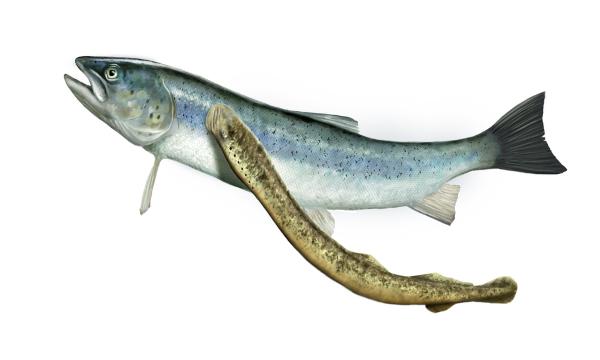To the legends of the north region they are an important part of Brazilian folklore and are often linked to the Amazon, merging elements of indigenous and European cultures.
One of the legends talks about the boto, a being that invades parties in riverside communities to seduce women; the iara, in turn, is the mermaid who seduces men and takes them to the bottom of the river. The popular culture of the North still has legends that explain the origin of important foods, such as cassava.
Examples of legends from the North region are:
pink dolphin;
iara;
cassava legend;
uirapuru;
lily pad;
mapinguari;
açaí legend;
guarana legend.
Read too: After all, what is folklore?
Topics of this article
- 1 - Summary about the legends of the North region
-
2 - What are the legends of the North region?
- pink river dolphin
- legend of iara
- cassava legend
- legend of the uirapuru
- Legend of the Victoria Regia
- 3 - Other legends from the North region
- 4 - Legends in Brazilian folklore
Summary about the legends of the North region
Many of the legends of the North region are related to the Amazon biome.
The legend of the boto narrates the action of this animal that turns into a man, invades parties and seduces women.
In the cassava legend, an Indian woman died as a baby, and in the place where she was buried a new plant, cassava, was born.
The legend of the iara tells of a mermaid who took men to the bottom of the river, and they were never seen again.
The legend of the uirapuru contra tells about a young indigenous man who falls in love with the chief's wife and is transformed into a bird by Tupã.
The legend of the water lily tells one about an indigenous woman who fell in love with the moon.
The legend of the mapinguari talks about a monstrous creature that lives deep in the Amazon rainforest.
The legend of açaí talks about the origin of this fruit so popular in the North of Brazil.
The legend of guarana also talks about the origin of this fruit, related to an indigenous person killed by an evil entity.
What are the legends of the North region?
The North region is culturally rich and deeply marked by indigenous culture. A number of folklore facts are from the North region and it is no different in legends. Many of the most popular legends of our folklore come from that region, and some are directly influenced by the biome prevails there: the Amazon. Let's get to know the most popular legends that exist in the North region of Brazil:
pink river dolphin
The boto is one of the most traditional legends of the North region and features a typical Amazonian animal: the pink dolphin. In legend, the pink dolphin has the ability to if transform into a human being, becoming a very handsome man, with good communication skills and who knows how to conquer women.
He turns into a human being and goes to riverside communities when there is a big party being held. At these parties, the boto always dresses in white clothes and wears a hat to hide his nostrils which he uses to breathe. Description aside, the boto goes to these places to seduce a woman.

A seduced woman lies down with the boto and becomes pregnant by him. The boto, in turn, returns to the river and disappears, never to be seen in that community again. The woman then becomes the sole mother of that child. To learn more about the legend, click here.
Do not stop now... There's more after the publicity ;)
legend of iara
The legend of the iara is a very traditional legend that is related to the North region, because the iara resides in the Amazonian rivers. This legend features Iara, a mermaid—that is, a being who is part fish and part woman—who is recognized for her beautiful appearance, voice, and enormous wealth. The three attributes are used to seduce men who sail the river or walk along its banks.

You Men seduced by Iara were taken to her residence at the bottom of the river and never seen again.. Her legend also states that iara came from an indigenous woman who was thrown into a river by her father, a pajé. Historians, however, claim that the legend of the iara was established in Brazil under the influence of European culture. To learn more about the legend, click here.
cassava legend
Essalenda talks about the origin of cassava, a fundamental item of indigenous food. In this legend, an indigenous woman appears pregnant, and her father, the chief, refuses to believe his daughter's version that she had not slept with anyone. The chief believed what his daughter said after receiving confirmation of it in a dream.

The child was born and claimed to be a girl, who was named Mani. The child fell ill and died suddenly, which greatly saddened his mother. Mani was buried in the hollow where she lived with her mother, and the place was watered until a plant grew. Some time later, the site was dug and it was found that the plant was, in fact, a manioc.
legend of the uirapuru
The legend of the uirapuru brings another remarkable character from the North region: the uirapuru, a bird known for its beautiful song. In this legend, a young indigenous man fell in love with a woman who was unattainable for him.: the chief's wife. The impossibility of being able to be with his love made the young man deeply saddened.
the god Tupã, seeing the young man's sadness, decided to transform him into the uirapuru, a bird from the Amazon region. He was close to his beloved, singing and being admired by her, who did not know that the bird was, in fact, that young indigenous man who had loved her. Her husband, the cacique, tried to capture the bird, chasing it in the forest and being punished. by Curupira.
Legend of the Victoria Regia

That Legend says that an indigenous woman named Naiá was in love with the Moon. In her village, it was said that the Moon (called Jaci) chose some indigenous people to transform them into stars in the sky, and this found Naiá. She went looking for Jaci every day at night to satisfy her desire to become a star.
Naiá did not give up on her goal, although she became increasingly saddened for not being one of the chosen ones. One day, Naiá decided to rest beside a creek and, when she woke up, she saw Jaci's reflection in the water and dived into the creek, but ended up drowning. The Moon, recognizing Naiá's efforts, decided to transform her into vhistory-regy, called the star of the waters.
Read too: Boitatá — the legend of Brazilian folklore that tells about a fire snake
Other legends from the North region
Other legends from the North that we can mention are the following:
Mapinguari: gigantic, hairy creature that resided deep within the Amazon rainforest. It had an eye in the middle of its forehead and a mouth where the navel is. It is furious and devours humans that cross its path.

acai legend: this legend tells the origin of açaí, a tree that was used by Tupã to feed an indigenous tribe in Pará that suffered from a severe shortage of food.
legend of guarana: legend that tells the origin of guarana, stating that this fruit originated from the eyes of a small indigenous man who was killed by the action of Jurupari, an evil entity in indigenous cosmogony.
Legends in Brazilian folklore
Legends are one important part of the popular culture of our country, which are notable features of our folklore and being present in all regions of Brazil, although there are different legends in the different regions that make up our territory, and even the legends that are common to different parts of the country can suffer variations regional.
In our folklore, legends became popular because they were passed down from generation to generation., mainly through orality, starting to be analyzed in its characteristics from the 20th century onwards by the Social and Human Sciences. These legends are part of the indigenous cultural legacy, African and European in our country.
Sources
CAMARA CASCUDO, Luís da. Brazilian folklore dictionary. São Paulo: Ediouro, s/d.
CAMARA CASCUDO, Luís da. Geography of Brazilian myths. So Paulo: Global, 2012.
Click to learn more about the commemorative date of Folklore Day. Understand the meaning of the date and its creation context.
Access and discover this important legend of Brazilian folklore. See details about the origin of the legend of the pink dolphin.
Learn more about the caipora, a traditional character in Brazilian folklore. Understand the role she plays and learn about different versions of her legend.
Learn more about Cuca, one of the most traditional legends of Brazilian folklore. Understand how this being is represented.
Click to learn more about the legend of the curupira. See about the origin of this legend and what was the meaning of the name of this being from Brazilian folklore.
The origins, contribution and changes of this field of cultural studies.
Access and learn about details of this important legend of Brazilian folklore. See what the legend of Iara tells us and learn about the origin of this narrative.



